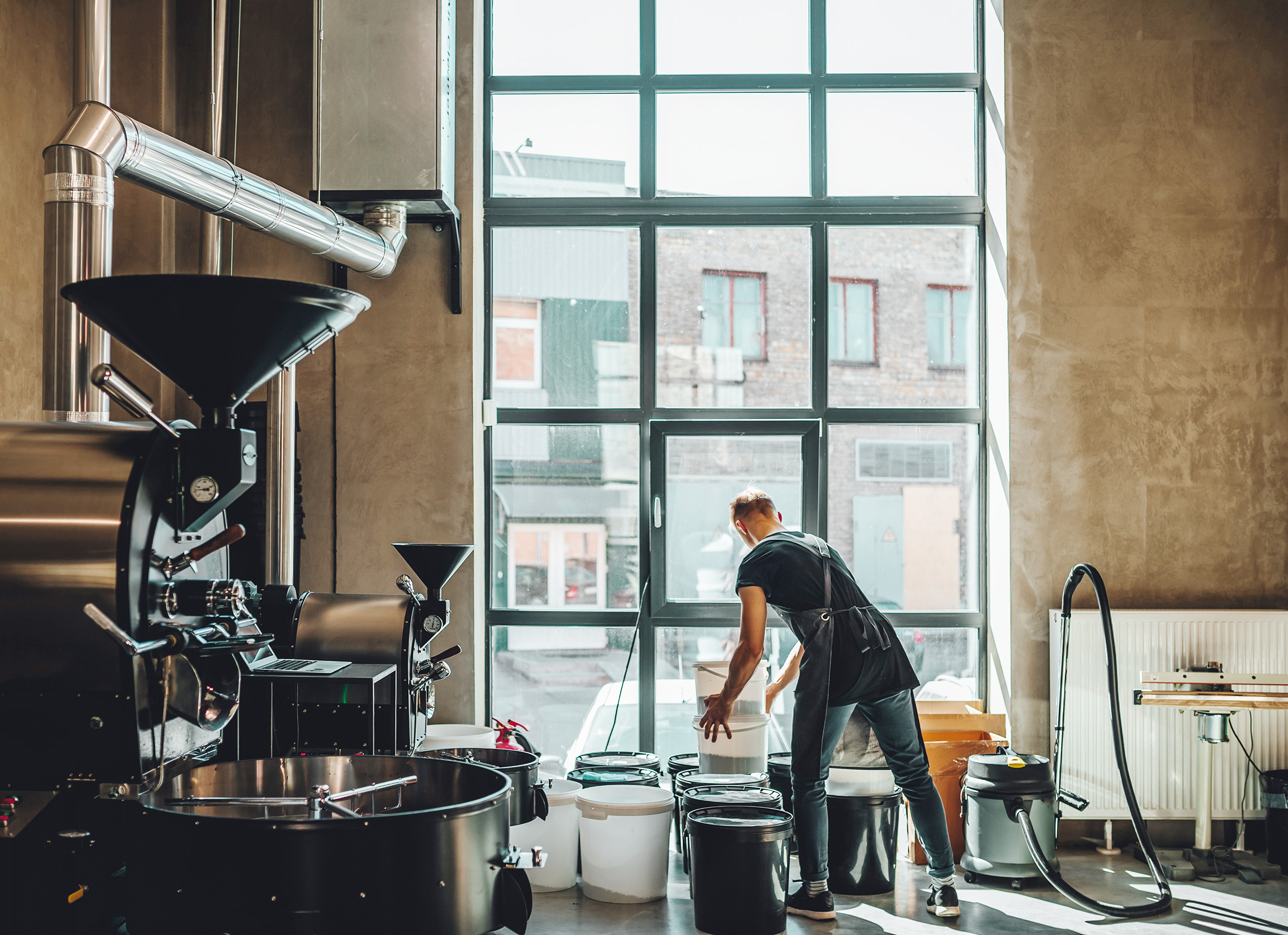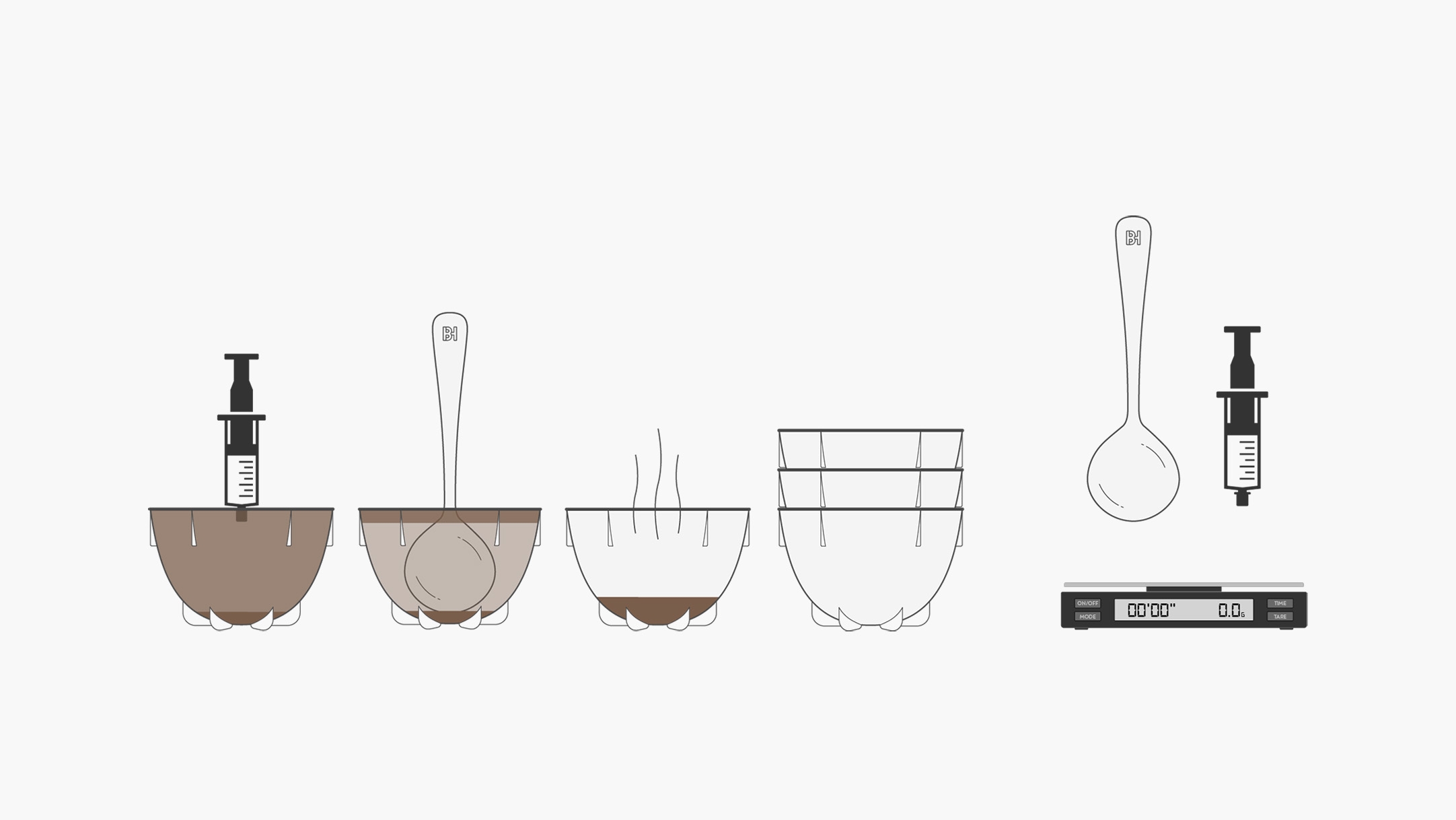Every roastery needs a few accessories to hand. You will need some tools from the moment you begin roasting; others you can consider introducing as you scale your business. Here is our list of roastery essentials and a few tips for getting the best performance out of each.
For Roasting
Until your roastery reaches a scale at which automated machinery loads and unloads your roaster for you, you will need plenty of durable, food-safe buckets to transport and store green and roasted coffees. Depending on the size of your business, you may also need a pallet truck or pallet lift to handle green coffee.
 Food-safe buckets are essential in a roastery for storing and transporting green and roasted coffees.
Food-safe buckets are essential in a roastery for storing and transporting green and roasted coffees.
You will also need a floor scale to weigh out your coffee before roasting and a smaller, more accurate scale for weighing roasted coffee into your retail packaging. In some jurisdictions the scale you use for packaging coffee must be certified for retail use. Larger roasteries may choose to install an automated weigh and fill machine instead.
Finally you will need a heat sealer to seal retail packaging. This may be a simple impulse sealer or, for larger operations, an automated band sealer.
For Cupping
All roasteries require cupping bowls, spoons, a grinder, a scale that is accurate to 0.1-gram resolution, a refractometer, and good-quality water.
 Essential tools for cupping: bowls, spoons, and a scale. Syringes are used to take samples for measuring extraction. Learn more about coffee cupping in our course Coffee Quality Control.
Essential tools for cupping: bowls, spoons, and a scale. Syringes are used to take samples for measuring extraction. Learn more about coffee cupping in our course Coffee Quality Control.
Colour Meters
We have not found much difference between the performances of different types of colour meters. Scott Rao points out that these devices are usually designed to take readings from ground coffee, and therefore he prefers brands such as Tonino that can take readings using smaller doses.